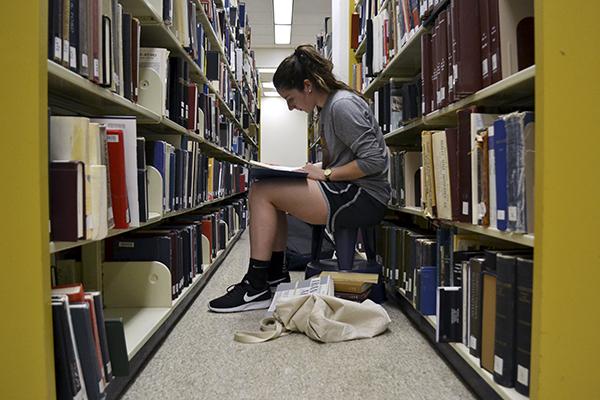Updated: March 28, 2016 at 4:28 p.m.
Don’t put off that research paper any longer – some of GW’s journal subscriptions could soon run out.
Geneva Henry, the dean of libraries and academic innovation, said officials are considering eliminating some of their journal subscriptions to cut library expenses. Henry said the rising price of journal subscriptions led library officials to re-evaluate the payments it will make for the resources next fiscal year.
“We are currently reviewing our collections for the next fiscal year and are considering the rapid increase in the annual cost of journal subscriptions,” Henry said in an email.
The cost of the nature physical sciences package, which includes subscriptions to eight science journals, increased by 85 percent this year, according to the library’s website. Between 2006 and 2016, some journal subscription costs have climbed as much as six times their original costs due to inflation, according to a report by Library Journal.
GW currently offers access to hundreds of databases and journals through their libraries.
As part of GW’s larger fundraising goals for libraries, which fit into the $1 billion campaign, officials plan to raise $18 million to $20 million for collections and research resources, according to GW’s campaign website.
Digital resources like 3-D printers were added to Gelman last year and the entrance floor was renovated in 2013. The first floor is now under construction to house a collection about the life and influence of Winston Churchill.
Henry began overseeing online learning in addition to libraries in January after GW’s online learning leader stepped down at the beginning of this semester.
In 2014, officials increased Gelman’s budget by $300,000 – the first collections budget increase in 10 years. The increase only allowed the library to keep up with previously owned subscription costs due to inflation rather than expanding the library’s resources.
Geneva added that upcoming 3 to 5 percent budget cuts to central administrative offices each year for the next five years did not impact the decision to evaluate subscriptions. Henry declined to comment on how much the libraries would save or what subscriptions officials are considering canceling.
To determine where to end partnerships, the library will analyze each journal based on usage, price, cost per use, “alignment with research grants” and comparison to requested resources, Henry said.
“A crucial part of this process involves seeking input from faculty,” Henry said. “We weigh carefully the impact of any proposed reductions on their research and teaching, and we make sure that they are aware when a resource will no longer be available to them and their students.”
Henry said some resources will continue to be available through the Washington Research Library Consortium partners, which includes some other D.C. universities, but added that these partners will also be cutting research offerings.
University Writing classes are teamed up with a University librarian who teaches students how to use databases to access journal articles, and librarians often teach students more specialized database skills in other courses.
Experts said other university libraries are facing similar problems of having enough money to spend on other resources because of rising database and subscription costs.
Stuart Shieber, a faculty director for the office for scholarly communication at Harvard University, said price disparities in the journal subscription market have made it difficult for universities to set aside enough funds for them recently.
“It’s safe to say that large academic libraries like Harvard’s or GW’s probably pay millions of dollars a year in subscriptions, but whether that’s appropriate or not is a different question,” he said. “In many fields, journal articles are the way that we as scholars communicate with each other. So if there’s more difficulty accessing that communication medium, scholarship suffers.”
Shieber said a possible solution to the reduction of subscriptions to online journals would be to increase the amount of open-access journals, which are free for readers.
“Ideally, where we will end up is open access, an everywhere better approach to how scholarly communication can work,” he said.
GW started an open-access resource for researchers last fall. The repository, called ScholarSpace, is designed to act as a permanent record of papers, articles, data sets and other scholarly works created at GW. Anyone at GW can access these works for free online, as long as they cite them properly in other work.
Charles Spetland, a collection development officer for the University of Minnesota’s library, said a database’s cost per use is usually considered when debating renewing a subscription.
“If you’re looking to cut databases, you would look at resources that cover the same territory,” Spetland said.







